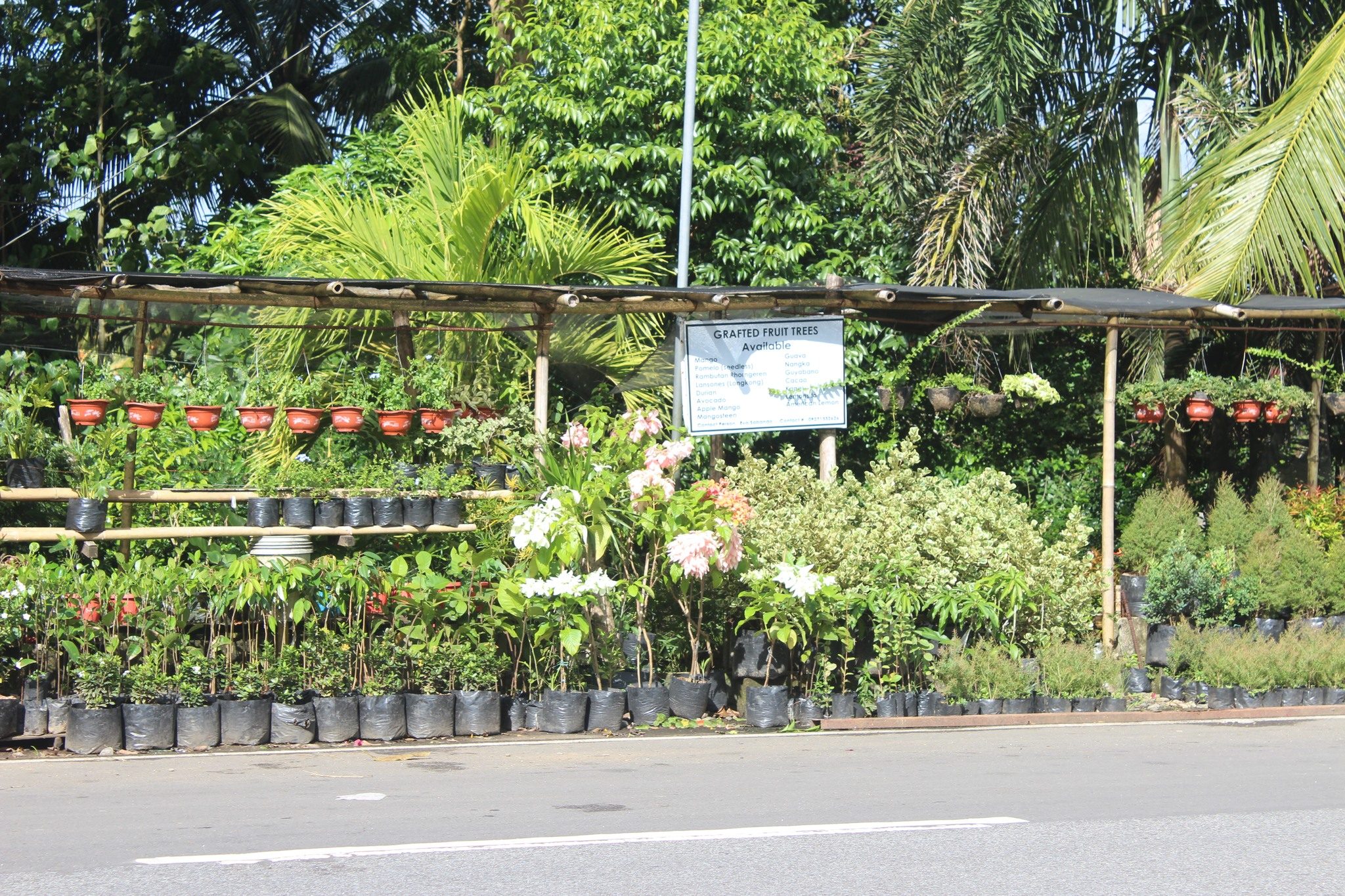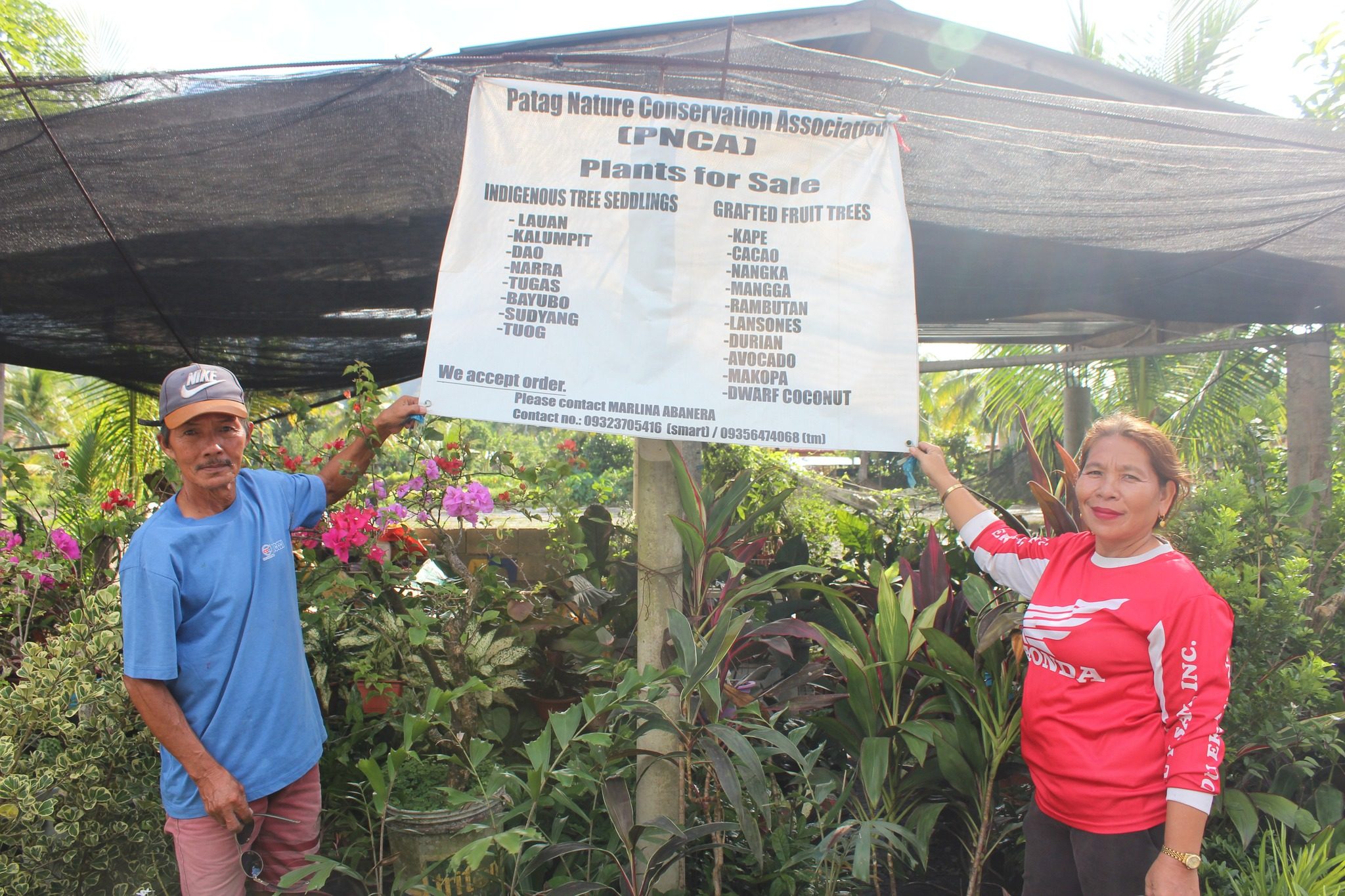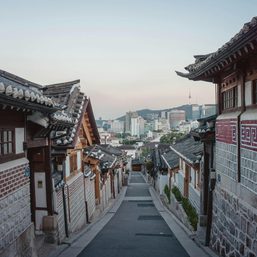SUMMARY
This is AI generated summarization, which may have errors. For context, always refer to the full article.

LEYTE, Philippines – The city of Baybay in Leyte boasts more than just its culinary delights but also its rich biodiversity. Best regarded by its lush environment, and the towering height of Mount Pangasugan which is among the last thriving ecological frontiers in the country, native tree seedlings have been a staple commodity in the city.
“Mitot” is a popularized term in Baybay which means pasalubong (gift or souvenir brought by someone returning from a trip). Mitot is derived from the phrase “me thought of you,” and what is better than having something like a tree seedling as a pasalubong for someone?
Stores across the city offer affordable and authentic tree seedlings, perfect for plantitos and plantitas, colloquial terms for those with a keen interest in growing and caring for plants.
Available at an unbeatable price of P10 each, the Patag Rainforest Association (PRA), located at the entrance to Barangay Patag, offers a variety of native tree seedlings, including kalumpit (Terminalia microcarpa), toog (Petersianthus quadrialatus), molave (Vitex parviflora), narra (Pterocarpus indicus), lawaan (Shorea genus), kamagong (Diospyros blancoi), and mahogany (Toona calantas).
In comparison, native trees from Eastern Visayas typically fetch prices ranging from P50 to P200 each. These nursery-grown seedlings are nurtured until their first few months.
For those who prefer larger trees, the toog, also known as magtalisai or kapullan, stands out, reaching up to an impressive 40 meters. Used for construction and plywood, its wood is highly valued.
The narra, the Philippines’ national tree, with its graceful drooping branches, and the kamagong, prized for both its edible fruit and timber, are also popular choices.
Another great choice would be kalumpit seedlings that grow up to 25 meters in height. These trees are very popular and are widely distributed throughout the Philippines. They are prized for their edible dark red fruits commonly used in preserves.
The Philippine mahogany, recognized for its excellent qualities in craftsmanship and furniture construction, grows to a height comparable to that of other trees.
For those who prefer smaller trees, the molave, a relatively smaller tree with lavender-blue flowers, is an excellent choice.
Sold in plastic pots, these seedlings are ready to plant and easy to carry in bulk.
Apart from the seedlings, the PRA also sells fruit trees in the form of grafts. While growing trees from grafts are slightly more challenging, it makes for a good practice for those who want to have their very own fruit tree that can already bear fruits as early as three years from the time of cultivation.
Lanzones and avocado seedlings, for example, can be bought for P250 each. Other fruit trees sold for grafting include rambutan, mangoes, durian, and guyabano or soursop, all at an affordable price of P180 each.

According to Marlina Abanero, purveyor of the Patag Nature Conservation Association (PNCA) which sells homegrown native tree seedlings, hopes that more people would choose trees as alternatives to traditional souvenirs that are available in Baybay as they do not only help the environment but also serve as timeless gifts.
“Ang pagtanom sa mga kahoy makapugong sa yuta ug mag-prevent sa landslide ngan baha. Makahatag pud hin presko na hangin. Usa pa, an paghatag ug puno as regalo, mahimo nga handumanan sa kun pila ka tuig na an nilabay tikang na gihatag ini,” Abanero said.
(Planting trees helps with strengthening the soil and prevents landslides and flooding. It also produces fresh air. Moreover, giving someone a tree as a gift would serve as a reminder of the years since it was given.)
Meanwhile, Dr. Paciencia Milan, one of the proponents of the rainforestation project that was first started at Visayas State University (VSU) in Baybay, emphasized the importance of planting trees and why they would make unique and special mitot.
“Having trees as giveaways to a wedding, or as a gift for someone is possible. Doing so will allow you to change their perspective about the importance of conservation, but I hope that they will actually plant it,” Milan said.
She also outlined three reasons why trees, particularly the native ones, will be beneficial to the environment if ever people would consider having them as souvenirs.
“First, it will help the conservation of our nature. You give them the chance to start thinking of conserving our forest’s genetic resources. Second, native trees grow slowly, so when they grow through the years, they also nourish the soil and provide habitat to wildlife. Lastly, you will be supporting our Sustainable Development Goals (SDGs),” Milan said. – Rappler.com
Jerry Yubal Jr. is an Aries Rufo Journalism fellow.
Add a comment
How does this make you feel?
![[OPINION] Choose native trees over exotics for climate resilience and biodiversity conservation](https://www.rappler.com/tachyon/2022/10/ipil-ipil-rebuttal-October-11-2022.jpg?fit=449%2C449)










There are no comments yet. Add your comment to start the conversation.